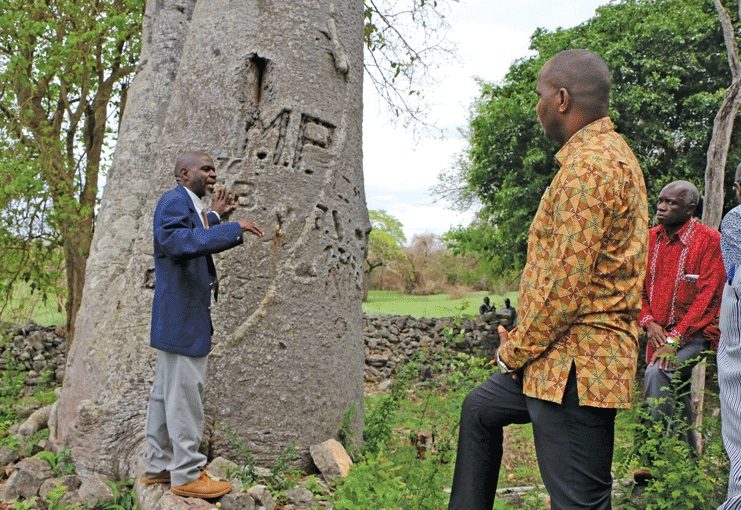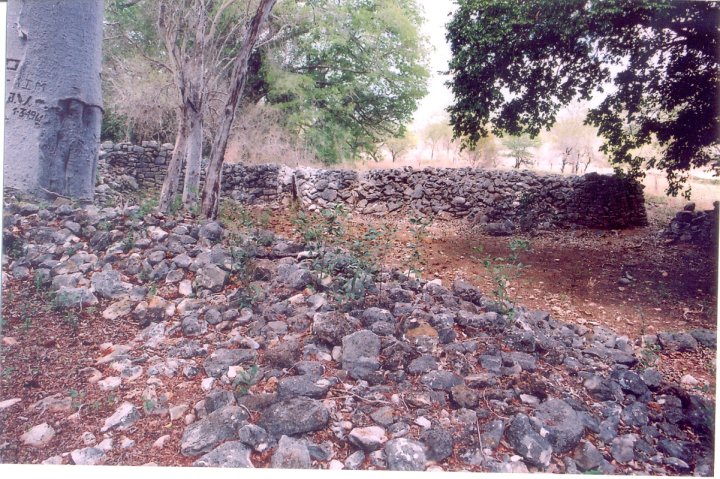Mozambique: Maputo Port launches Amateur Photo Contest 'A Ver Navios'
Manyikeni may once again become a tourism landmark

Photo: Jornal Domingo
The Archaeological Museum of Manyikeni, in the district of Vilankulo, northern Inhambane, may be re-qualified and associated with the Zinave National Park in Mabote as part of the revitalisation of tourism in the interior of Mozambique.
Among the urgent actions is the training of tourist guides in the history of the gold and spice trade practised in the region and fluent in Xitshwa, Portuguese, English and French languages.
Signage at the intersection of National Highway Number One (EN1) and the Mapinhane-Mabote road is another urgent requirement.
The governor of Inhambane, Daniel Chapo, who recently visited the site, said he would hold a meeting with the Vilankulo authorities, Eduardo Mondlane University and the Ministry of Culture and Tourism with the aim of devising a plan to revitalise the site and put it on the world tourism map.
By Victorino Xavier
About Manyikeni

Manyikeni is a Mozambican archaeological site, around 52 km west of the coastal city of Vilanculos. The site dates from the twelfth to seventeenth century and is believed to part of the famous Mwenu Mutapa’s Kingdom built in the Great Zimbabwe tradition of mortar-less stone walls. The central stone enclosure complex is built in this tradition, and the finding of a Zimbabwe-style iron gong at the site also suggests cultural ties.
The site today is covered by a grass which is common in Zimbabwe but not in Mozambique, suggesting that it might have been introduced along with cattle from Zimbabwe. The site is located 350 km from Great Zimbabwe, the capital of a large, pre-colonial empire active from at least the 11th to the 14th centuries.
Experts posit that only the ruling elite at Manyikeni consumed beef, as cattle bones have been found only in the central part of the site, whereas the lower order who lived on the periphery of the site ate meat from ovi-caprines.
The presence of a large number of glass beads and seashells at the site have led to speculation that the settlement traded extensively with the ancient coastal settlement of Chibuene.
The site is located on the eastern coastal plains of the Indian Ocean and one of the only Zimbabwean tradition stone enclosures relatively near the coast, emphasising the site’s role as a coastal trade location. Most importantly, the site appears to have had an important trade relationship with the site located 50 km away, Chibuene, an important Indian Ocean trade network site in the late first millennium AD to the 1700s AD.
Occupation of the site begins at about 1200 AD and lasting until 1700 AD. This occupation period is typically broken up into three periods: 1200 AD in which the stone enclosure was being built; 1200-1450 AD in which consists of the height of occupation; and to 1700 AD in which the site was abandoned.
The stone enclosure was excavated for the first time in 1975 and 1976, shortly after Mozambique independence by the Eduardo Mondlande University Centre for African Studies and the British Institute in Eastern Africa to 1978. The research in this period determined that the site was a later Iron Age farming community of the Great Zimbabwean tradition, potentially used as a trade outpost with Chibuene.
The most distinguishing feature of the site is the stone enclosure reflecting that of the Great Zimbabwe tradition. This enclosure measures 20 meters in diameter with a height of 50 cm, making it much smaller in size than the enclosure of Great Zimbabwe.
The stone enclosure was constructed without mortar in a similar fashion to Great Zimbabwe, further emphasising its association with this tradition.
Construction was undertaken with the use of limestone, differing from other Great Zimbabwe associated sites that used granite. This was due to the higher availability of limestone in the surrounding region which follows the pattern of other periphery sites of the Great Zimbabwe tradition that utilised resources from the surrounding region, rather than importation of granite for the construction of the stone enclosures.
Great Zimbabwe stone enclosure construction was affected by the given location of the site with the availability of stone determining the size of the stone enclosure of the particular site.
Granite was the most malleable construction material used by the Great Zimbabwe tradition, but as for limestone at Manyikeni, this material was much more difficult to shape into building blocks. As a result, the use of limestone was partly responsible for the much smaller size of the stone enclosure at the site.
This site was added to the UNESCO World Heritage Tentative List on September 15, 1997 in the cultural category.
- Manyikeni can be reached from Vilanculos by driving to the EN1 and then travelling south for 30 km. At the small town of Mapinhane, turn right and drive west for 29 km. A small sign shows the entrance to a small three-kilometre track leading to the ruins.













Leave a Reply
Be the First to Comment!
You must be logged in to post a comment.
You must be logged in to post a comment.